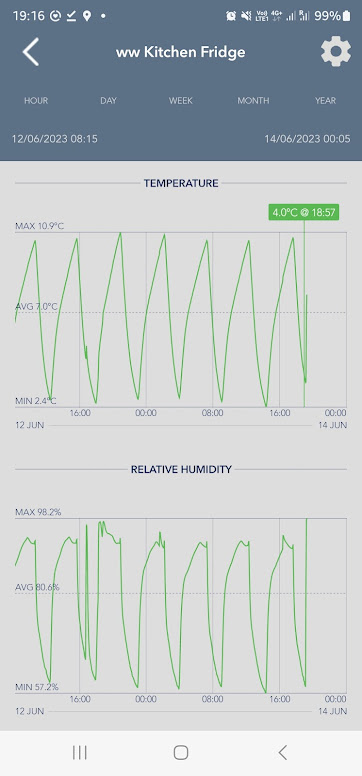most fridges thrash their temperatures
Have you ever wondered what goes on in your fridge when the door is closed?
The answer is probably not that the light secretly stays on, but that the temperature fluctuates biglier than you expected, and over a longer period (and the humidity plummets along with temperature while the refrigeration runs).
Using logging bluetooth temperature-and-humidity devices, specifically the Sensorpush HTP.xw, I have measured this for three domestic fridges. They all showed something like the above, which is for a Bosch unit left in a kitchen by a previous owner of a house.
The sensor was placed on a shelf, near the top, and near the back, but not touching.
The temperature ranges, with period of around 5 hours, from around 2.5 degrees to around 11 degrees. This is a big range, 8.5 degrees, and the max, 11 degrees, is too hot. I would be happy with a range of, say 2-5 degrees, but even that seems big. What's the startup cost to the "refrigeration circuit", or, why would engineers want to make the refrigeration cycle such a big one? Can the "refrigeration cicuit" not be run at lower intensity for more of the time?
Turning the knob up tends to make the minimum colder, soon freezing, which is also not good to have in the cycle, but leaves the overall profile unchanged.
This seems silly, but if it's sensible, I would be interested in how it's sensible.
Did fridge makers just think no one would monitor inside? At first glance, this does seem to be an argument in favour of de-industrialising Germany, although I'm sure there are also arguments against that.




Comments
Post a Comment